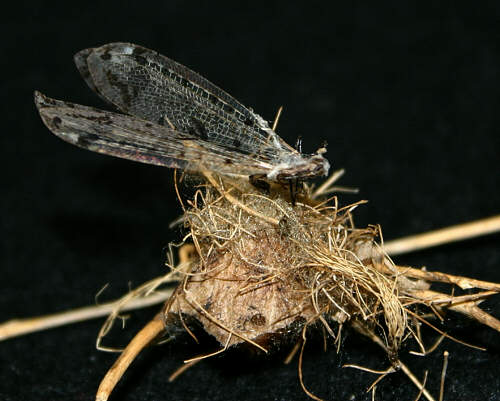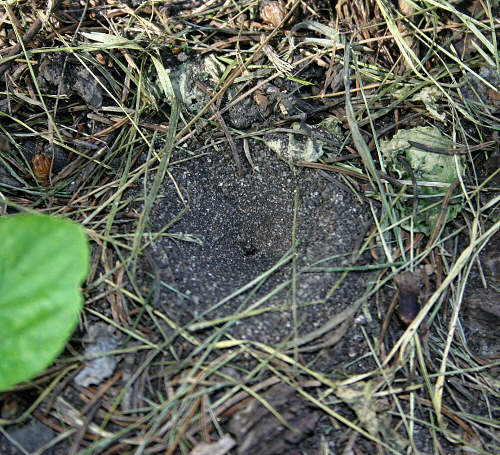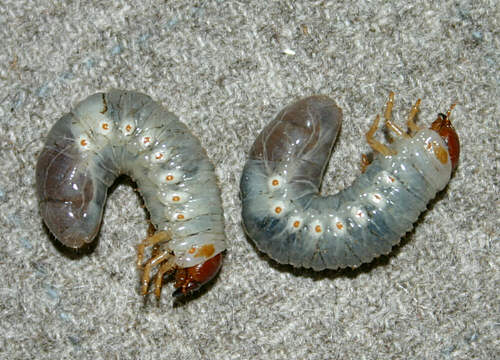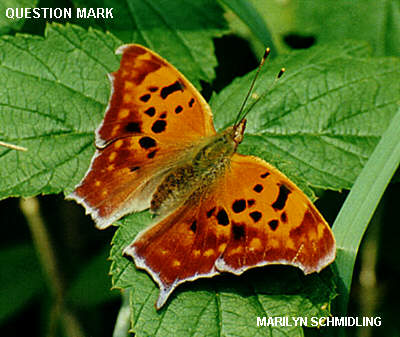
INSECTS
Jack Schmidling Productions, Inc.
18016 Church Road ~ Marengo IL 60152
Phone:815 923 0031 ~ Email:jack@schmidling.com
| ASTRONOMY | BEER | CHEESE | FIBER CRAFTS | GEMS | PRESERVED FOOD | SILVER | VIDEO |
| PHOTO OF THE WEEK | PHOTO INDEX | HOME |

There are two nearly identical butterflies with the curious names of Question Mark and Comma. Even the scientific names reflect this curiosity. One being P. interrogationis and the other P. comma.
For some strange reason, the Comma is also known as the "Hop Merchant" in spite of the fact that they both lay eggs on and the larvae thrive on hops, nettle and elm leaves.
The only visible difference between the two is the shape of very small silver marking on the underside of the hind wing. In one case it looks like a comma and the other has a small dot below it making it look sort of like a question mark.
This is very difficult to see and even more difficult to photograph on a live butterfly. As we are not inclined to kill butterflies, we are making this one of our photo projects for the coming Summer.
It is interesting to ponder that, being two different species, (which by definition means they can not interbreed), we have to assume that they can read, at least punctuation marks.
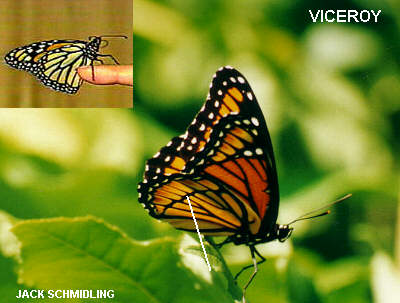
This nearly identical look-alike is the much less common Viceroy. They tend to be a bit smaller than the Monarch but the only sure difference between the two is the semi-circular vein on the underside of the hind wing. Note that the Monarch in the inset, resting on Marilyn's finger has no such vein.
The Monarch caterpiller thrives on the Milkweed which makes it and the adult Monarch very distasteful to birds. Once a bird tries to eat one, it avoids them and anything that looks like a Monarch in the future.
Through natural selection, the Viceroy has evolved to look enough like a Monarch to be nearly immune to attacks by birds.
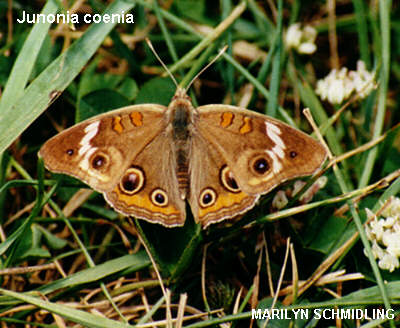
This striking butterfly is a regular visitor here although we rarely see more than one or two each year. It is much more common in the Southern parts of it's range.
The major food sources for it's larvae are Toadflax and Plantain.
In size, it is somewhat smaller than a Monarch.
The "eyespots" are supposed to make it scary to predators but one can take that with a grain of salt.
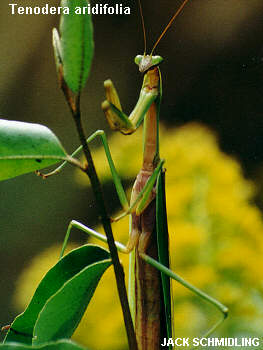
It is most disconcerting to walk down the path and see one looking at me, head following as I walk past. This one is clearly looking at the camera.
Mantids are voracious preditors, primarily of insects and insect larvae. I saw one once with a little toad in its grasp which I of course rescued.
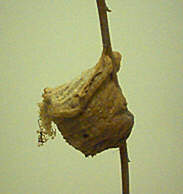
The cocoon over-winters and the eggs hatch out in spring. The frayed material dribbling out of the left side of this cocoon indicates a successful hatchout.


This butterfly often rests with its head pointed down.
The major food sources for its larvae are grasses.
They are not very common here and we only see one or two a year and sometimes, none at all.
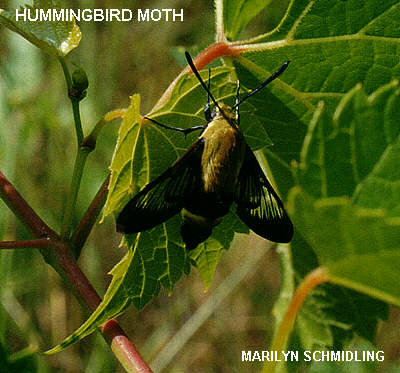
When at rest, one is reminded more of it's other common name, Clearwing Moth.
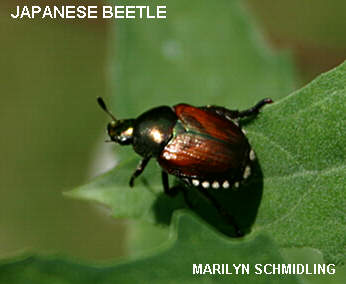
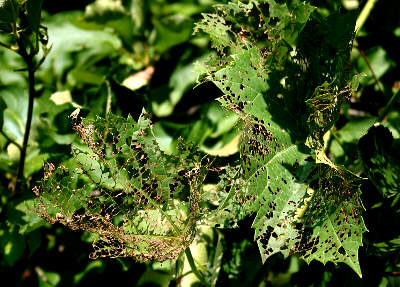
This picture gives some idea of the destructiveness of the Japanese Beetle. This is what grapevine leaves look like after a few days under attack. Several of our vines were nearly destroyed before I decided to do something about it.
I sprayed the vines with Sevin and Malathion alternately for a few days and they completely vanished. In fact when I decided to photograph them, I could find none. Until I looked at the pole beans in the garden, that is.
So much for the wonders of our "global economy".
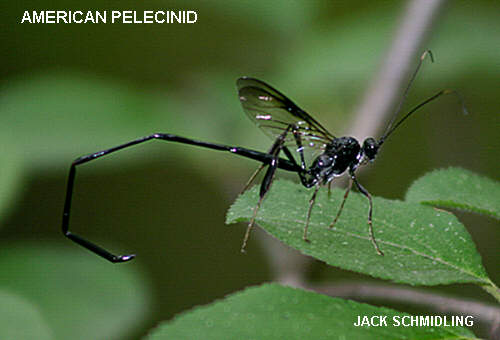
The female's much elongated abdomen serves a dual purpose. It is poked into the soil "looking" for June Bug larvae. When one is found, an egg is deposited on the grub and left to parasitize it. The grub dies and the larval wasp survives to start the process over in the Spring.
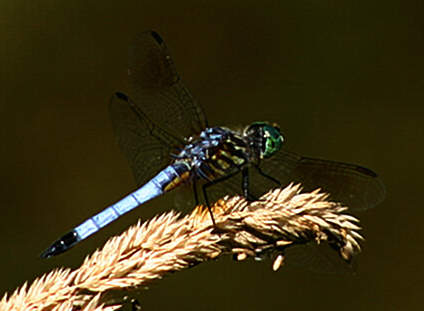
The Blue Dasher is one of the most common dragon flies in the Midwest.
They migrate south for Winter and are the first to show up in Spring; mature and ready to breed and lay eggs in ponds and lakes.
The larvae spends most of the summer (which is most of its life) in the water as a voracious predator known to fisherman as a helgramite.
In Fall, they metamorphose into the adult dragon fly and head south to start all over again.

They are nocturnal insects, spending the day just hanging around looking like sticks and the night eating foliage, their favorite seems to be oak leaves.
This picture caught a pair "doing it" right on our screen door. The larger one being the female, will drop her eggs in the leaf litter where they will overwinter and hatch out into nymphs in Spring.
